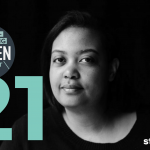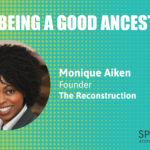Diversity and inclusion (D&I) are two very important words. For the past two decades, companies have been talking about this hot topic, but for some reason all of the talk is not translating into action. Yes, diversity initiatives are everywhere. D&I managers are busy sharing ideas. Conferences about diversity, inclusion, and culture are held almost daily across the country, and this topic has become another major attraction for companies in the post-#MeToo world. Companies spend millions of dollars every year to train their employees on the elimination of bias, but the training is still not leading to transformation and, in many cases, appears to be little more than lip service.
Even though we have been talking about these issues for over two decades, studies continue to show that women of color experience harassment at greater rates than other women — studies show that 25 percent of all Black women are harrassed. Black people also reported a 60 percent higher rate of discrimination compared to White people.
25 % of all Black women experience harassment. Black people report a 60 % higher rate of discrimination, compared to White people.
Today, diversity is a business priority for most companies, yet year over year we see these astonishing statistics showing us that the efforts being made are not enough. Since June 2017, more than 800 CEOs have signed a pledge to “advance diversity and inclusion in the workplace.” They are the same CEOs who have developed codes of conduct and employee handbooks with “zero tolerance” policies against harassment, discrimination, etc. As a result, D&I is a top business imperative.
Yet, there is a major problem with all of these efforts, because no matter what companies implement when it comes to diversity and inclusion, it doesn’t seem to work. They do not accomplish more diversity and they do not foster more inclusion. On the contrary, these attempts often have opposite outcomes, excluding people and potentially hurting the people it is supposed to be helping in the first place. Instead of fostering and encouraging inclusion, current diversity initiatives have created new communities where the same people they were supposed to help end up gathering together to discuss the issues, in their own like-minded groups. We need united groups comprised of different folks with very different perspectives to truly enact change and bring everyone’s voice into the conversation.
“We need united groups comprised of different folks with very different perspectives to truly enact change and bring everyone’s voice into the conversation.”
To me, current diversity efforts and initiatives are kind of like the sexual harassment prevention training that companies give to their employees. They are inefficient, yet companies spend millions of dollars every year holding these trainings. In the end, misconduct is still pervasive. The intention and goals are great and noble, but the outcomes and results are disheartening, and there is still much progress to be championed.
As an entrepreneur (founder and CEO of #NotMe), an employment lawyer (Principal at Empower Law), and an advocate for greater equality, safety, and transparency in the workplace, I have been immersed and very interested in diversity initiatives and matters since 2006. When I was a young employment lawyer, I saw first-hand the vast sea of issues surrounding D&I, and the huge gap that exists between action and accountability. Bottomline, as I see it, companies have to awaken to this critical tide and do what is right. In my opinion, the D&I community has hijacked a very important subject that concerns us all, which has had a negative impact on the workforce, the ‘culture,’ and the very same people that the D&I community is supposed to help.
You see, we are currently living in what I call the D&I paradox.
While both diversity and inclusion are unquestionably a must for companies, the quest for diversity and inclusion feels doomed and destined to fail unless we course-correct and make a few important changes. The current framework of most, if not all, D&I initiatives is not done with the right intent or focus. It is thus time to reframe the conversation and our approach to D&I. We have seen a ton of talk and initiatives, but very little change on the ground.
Female executives still represent less than 15 percent of executives, and ethnic minorities only gained 1 percent in this area between 2015 and 2018, with their representation moving from 12 percent to 13 percent. In the US, the share of Black men in management within companies with more than 100 employees was 3.4 percent in 2017. This is not just a US issue; the EU is experiencing similar issues in their corporate workplace. The number of women leaving jobs in the digital world, mostly due to gender bias in that industry, causes an annual productivity loss for the European economy equaling 16.1 billion euros. Additionally, 19 percent of unemployed women left the workplace to care for their children. Globally, the stats and the data don’t lie. The reality is, once the anger and emotions have settled down, when we look at the larger D&I landscape, very little progress has been accomplished.
Why is this? I would like to suggest two main reasons for our collective failure:
- The people who carry the D&I torch should not be the ones carrying it in the first place; and
- Our approach is fundamentally flawed.
1. Who currently carries the D&I torch, and why must that change?
The overwhelming majority of people deeply involved in and passionate about D&I are minorities. The people who should be more deeply involved in the process, and not simply promoting D&I, are our corporate leaders who, as the data shows, are still positioned as predominantly White, straight, cisgendered men. These leaders should be more immersed in paving the way to more diverse and inclusive workplaces. Beyond lip service, they are making big announcements and declarations, and signing codes of conduct promoting D&I. Once the ‘awakened’ Tweets or announcements have been made on their organization’s behalf, these corporate leaders often do not examine D&I again with a keen eye.
Currently, the people in charge of D&I efforts at companies, while they may be impassioned about this topic, have very little power to drive impact in their organization. While efforts in recruiting and talent retention are important, they do not matter in the long run, without greater change from the top down. D&I managers can work on selecting and developing the elimination of bias training that employees at the company will receive, and they can help establish employee resource groups or other forums for discussion. They can put together and participate in conferences on diversity featuring high-profile speakers, but these D&I leaders cannot make the hard calls and put their companies on the path they need to create truly diverse and inclusive workplaces. They were given a mission that is impossible, because they lack the power and ability to achieve it. Real impact for effective change can and always will need to happen from the top down.
So, unless and until leaders and decision-makers at companies develop a real and genuine interest in D&I initiatives, and genuinely commit time to creating a diverse and inclusive workplace, no progress will be achieved. Superficial interest in the subject and lack of engagement will achieve nothing. It is about time the D&I community realizes this and demands that CEOs and members of the C-suite become the D&I managers and the experts on this issue. Nothing good will happen for anyone, including and especially minorities, if the C-Suite is not actively involved and part of this critical process.
So, as a first step, how about focusing on making the C-Suite diverse? How about a commitment from CEOs and leaders to have diverse and inclusive executive teams? Trust me, if this is accomplished, our workplaces will quickly and naturally become more diverse and inclusive. Nothing trumps leadership by example. Leaders need to start committing to audit the members of the executive team on a regular basis. If the results of the audits are not good enough, let’s work on improving them. It will be a great first step toward greater diversity and inclusion.
2. Time to try a new approach and reframe the conversation on D&I.
After more than 15 years of interest in and involvement with the issue of D&I, I recently attended a conference that completely solidified my attitude toward the D&I paradox. During the conference, I came to the conclusion that it was time to abandon the usage of the terms “diversity and inclusion” altogether, as current initiatives and efforts have led to more seclusion rather than inclusion.
I believe that our framework of reflection has been too small. We need to expand it so that the conversation can actually be much more inclusive, i.e., involving every one of us, not just HR, D&I, and minority people. What we need to aim for is to get people together and closer to one another. D&I efforts have not accomplished any of that. What they’ve enabled is bringing people who look the same or with similar experiences together. But, while it was accomplishing that, it was further segregating and keeping them apart from the others — from the majority, the people we want to become ‘inclusive.’
Diversity is not and should not be a one-way street. As a result of D&I efforts that took place over the past 15 years, companies now have a bunch of affinity (or ERG) groups. Note that the concept of ERGs is not new. It is 60 years old; the first ones were created by the CEO of Xerox in the 1960s with the goal of addressing racial tensions, but they have come back in popularity in recent years. There are many possible communities, and the potential for affinity groups is limitless. However, how do these groups, which bring together people who share the same experience or think alike, create more diverse workplaces? Does the creation of ERGs in companies satisfy and address the need for diversity and inclusion? If you think it does, I would like to understand how. How do ERGs help foster a diverse, inclusive workplace aligned with the organization’s mission, values, and business objectives? Shouldn’t our goal instead be to bring different people together in the same ERGs, rather than people who share similar experiences, background, or interests? Where is the ‘diversity’ if we are all similar? If you agree that what we are currently doing is not enough, the question then becomes: what can (and should) we rightfully expect from diversity efforts and initiatives?
One of the first and most important steps we should take is to change the framework of the conversation. We need to go from diversity to identity. If you really think about it, the issue has never been about ‘diversity.’ Rather, it has always been about identity: mine, his, hers, theirs, yours, and ours. People want to work for companies that embrace their true self or identity, and expect workplaces in which they can fit in, and that they can identify with. People want to relate with their workplace. Since words matter, the D&I conversation plateaued and got stuck. It was inevitable. We have been using the wrong terminology, and it is time to expand the scope of our reflection.
How did I come to this conclusion? Remember the conference I mentioned earlier in this article? It had a D&I pin station. At that station, you could find vulnerability pins or pins of valor. Those pins were on display so each attendee could select the ones they related to, and that best defined them. The words on the pins were, for example, “immigrant, fat, LGBT, bilingual, White straight dude, liberal, conservative, etc.”
I started selecting the pins that I thought were defining me, and that I would wear if I had to explain who I was. As I was selecting pins of valor from their displays, I had an epiphany. It is there and then that I realized that, in fact, it had never been about ‘diversity.’ How could I and so many others have been mistaken for so long?
It was, and it has, in fact, always been about identity; because we are all multidimensional humans, keeping the conversation focused on diversity is limiting. Moreover, work has become a place for identity fulfillment. This was not the case a generation or two ago. This is a new phenomenon and one that should not be disregarded. We must expand the conversation and make it multidimensional. Most importantly, we must stop putting people in boxes.
What is your identity? What is mine? Identity is complex. A person is never defined by one or two of their character’s traits — by one’s religion, gender, color, ethnicity, disability, sexual preference, etc. In fact, those are only tiny components of that person’s identity. Our identity is complex and the result of a myriad of elements.
Diversity has had a tendency, in many instances, to focus only on one or two traits or qualities of a person. While in fact, all along, people have been attempting to bring their whole selves to work. Their whole identity.
What we have all been craving, and what we want our employers to do, is to embrace each and everyone’s unique identity — not only our diversity.
The question no longer should be how to have inclusive and diverse workplaces where all people from minorities feel included and embraced. Rather, the question should become how to have workplaces where everyone’s identity is respected and treated with the dignity it deserves.
I do not have the full answer to that question yet, but I am convinced that the two points discussed in this article are a good place to start: 1.) Let’s have leaders lead and show everyone the way; and 2.) Let’s change the terminology and perspective. I encourage you to join me in this critical conversation. Who’s in?







